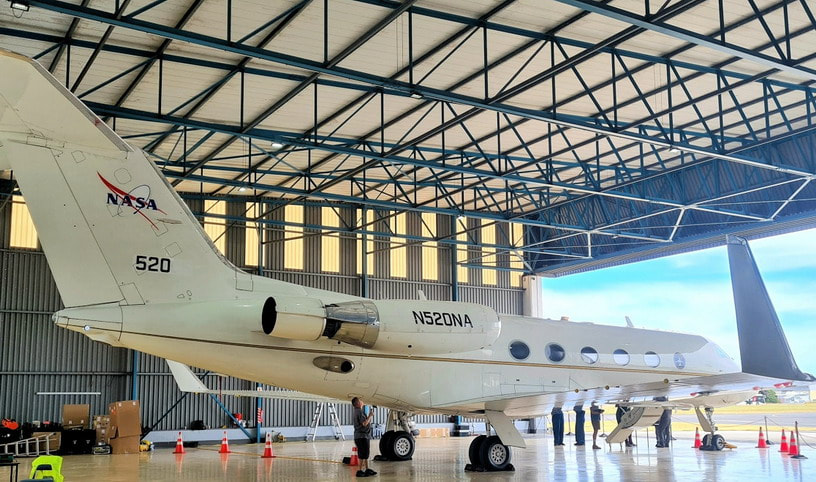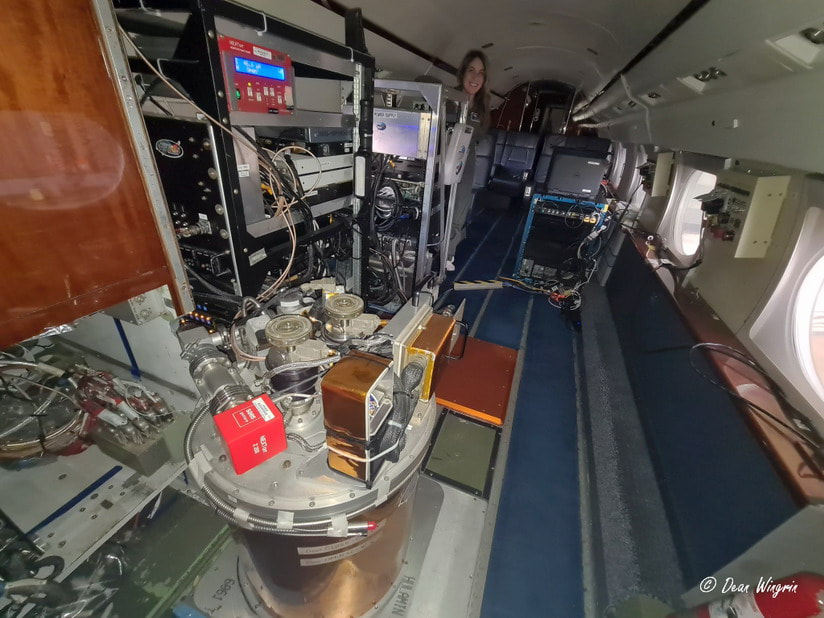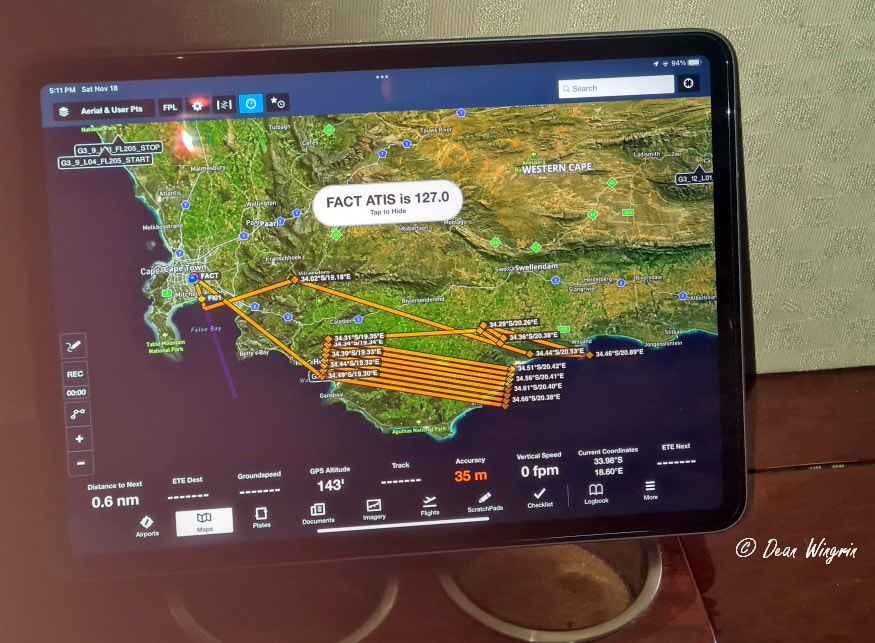- Home
- Magazines
-
Newsletters
- 19 July 2024
- 12 July 2024
- 5 July 2024
- 28 June 2024
- 14 June 2024
- 7 June 2024
- 31 May 2024
- 24 May 2024
- 17 May 2024
- 10 May 2024
- 3 May 2024
- 26 April 2024
- 19 April 2024
- 12 April 2024
- 22 March 2024
- 15 March 2024
- 8 March 2024
- 1 March 2024
- 23 February 2024
- 16 February 2024
- 9 February 2024
- 26 January 2024
- 19 January 2024
- 12 January 2024
- 22 December 2023
- 1 December 2023
- 24 November 2023
- 10 November 2023
- 3 November 2023
- 27 October 2023
- 20 October 2023
- 13 October 2023
- 6 October 2023
- 29 September 2023
- 22 September 2023
- 15 September 2023
- 8 September 2023
- 25 August 2023
- 18 August 2023
- 11 August 2023
- 4 August 2023
- 28 July 2023
- 21 July 2023
- 14 July 2023
- 7 July 2023
- 30 June 2023
- 23 June 2023
- 15 June 2023
- 2 June 2023
- 26 May 2023
- 19 May 2023
- 12 May 2023
- 5 May 2023
- 28 April 2023
- 21 April 2023
- 14 April 2023
- 6 April 2023
- 31 March 2023
- 24 March 2023
- 17 March 2023
- 10 March 2023
- 3 March 2023
- 24 February 2023
- 17 February 2023
- 10 February 2023
- 3 February 2023
- 27 January 2023
- 13 January 2023
- 22 December 2022
- 15 December 2022
- 9 December 2022
- 2 December 2022
- 25 November 2022
- 18 November 2022
- 11 November 2022
- 4 November 2022
- Advertising
- Subscribe
- Articles
-
Galleries
- AOSH Firexpo 2024
- Midvaal Fit to Fight Fire 2024
- WoF KNP 2023 Gallery
- TFA 2023 Gallery
- DMISA Conference 2023
- ETS 2023 Gallery
- Drager Fire Combat and Rescue Challenge 2023
- AOSH Firexpo 2023
- Midvaal Fit to Fight Fire
- WC IFFD 2023
- NMU 13th Fire Management Symposium 2022
- JOIFF Africa Conference 2022
- ETS 2022 Gallery
- TFA 2022 Gallery
- IFFD 2018
- SAESI
- TFA
- WRC 2018
- WRC 2019
- A-OSH/Securex
- IFE AGM 2019
- ETS Ind Fire Comp Nov 2019
- ETS Challenge 2021
- Drager launch
- Drager Fire Combat and Rescue Challenge 2022
- TFA
- Contact
- Home
- Magazines
-
Newsletters
- 19 July 2024
- 12 July 2024
- 5 July 2024
- 28 June 2024
- 14 June 2024
- 7 June 2024
- 31 May 2024
- 24 May 2024
- 17 May 2024
- 10 May 2024
- 3 May 2024
- 26 April 2024
- 19 April 2024
- 12 April 2024
- 22 March 2024
- 15 March 2024
- 8 March 2024
- 1 March 2024
- 23 February 2024
- 16 February 2024
- 9 February 2024
- 26 January 2024
- 19 January 2024
- 12 January 2024
- 22 December 2023
- 1 December 2023
- 24 November 2023
- 10 November 2023
- 3 November 2023
- 27 October 2023
- 20 October 2023
- 13 October 2023
- 6 October 2023
- 29 September 2023
- 22 September 2023
- 15 September 2023
- 8 September 2023
- 25 August 2023
- 18 August 2023
- 11 August 2023
- 4 August 2023
- 28 July 2023
- 21 July 2023
- 14 July 2023
- 7 July 2023
- 30 June 2023
- 23 June 2023
- 15 June 2023
- 2 June 2023
- 26 May 2023
- 19 May 2023
- 12 May 2023
- 5 May 2023
- 28 April 2023
- 21 April 2023
- 14 April 2023
- 6 April 2023
- 31 March 2023
- 24 March 2023
- 17 March 2023
- 10 March 2023
- 3 March 2023
- 24 February 2023
- 17 February 2023
- 10 February 2023
- 3 February 2023
- 27 January 2023
- 13 January 2023
- 22 December 2022
- 15 December 2022
- 9 December 2022
- 2 December 2022
- 25 November 2022
- 18 November 2022
- 11 November 2022
- 4 November 2022
- Advertising
- Subscribe
- Articles
-
Galleries
- AOSH Firexpo 2024
- Midvaal Fit to Fight Fire 2024
- WoF KNP 2023 Gallery
- TFA 2023 Gallery
- DMISA Conference 2023
- ETS 2023 Gallery
- Drager Fire Combat and Rescue Challenge 2023
- AOSH Firexpo 2023
- Midvaal Fit to Fight Fire
- WC IFFD 2023
- NMU 13th Fire Management Symposium 2022
- JOIFF Africa Conference 2022
- ETS 2022 Gallery
- TFA 2022 Gallery
- IFFD 2018
- SAESI
- TFA
- WRC 2018
- WRC 2019
- A-OSH/Securex
- IFE AGM 2019
- ETS Ind Fire Comp Nov 2019
- ETS Challenge 2021
- Drager launch
- Drager Fire Combat and Rescue Challenge 2022
- TFA
- Contact
|
24 November 2023
|
Technology: NASA’s BioSCape campaign successfully maps biodiversity in Western Cape
NASA’s ambitious biodiversity field campaign, BioSCape, conducted over four intensive weeks using modified Gulfstream III and Gulfstream V business jets from Cape Town, has been deemed a success with just a week remaining in the mission. The collaborative effort between scientists from the United States and the University of Cape Town (UCT) focused on mapping marine, freshwater and terrestrial species and ecosystems in South Africa’s Greater Cape Floristic Region (GCFR), including surrounding coastal and marine environments.
The GCFR contains two Global Biodiversity Hotspots with the richest temperate flora and the third-highest marine endemism in the world. The field campaign includes a collection of new hyperspectral data ranging from ultraviolet to thermal wavelengths acquired by various airborne sensors. These include the Portable Remote Imaging Spectrometer (PRISM) and the Airborne Visible/Infrared Imaging Spectrometer – Next Generation (AVIRIS-NG) sensor aboard the Gulfstream III and the Hyperspectral Thermal Emission Spectrometer (HyTES) combined with the Land, Vegetation, and Ice Sensor (LVIS) laser altimeter aboard the Gulfstream V aircraft.
Dennis Rippy, a NASA Gulfstream III pilot, shared his insights on the project’s achievements, stating, “From my understanding, the project objectives of the programme have been achieved, all the data that they wanted and more.”
This endorsement underscores the effectiveness of the airborne imaging spectroscopy and LIDAR technologies employed, as well as the seamless collaboration between the American and South African scientific communities.
Rippy also commended the exceptional support from air traffic controllers, acknowledging their flexibility in accommodating the campaign’s unique flight patterns and route adjustments. He explained, “Sometimes dealing with air traffic controllers, especially when it’s an unusual type of flight pattern, launching from an international airport and then going on a weird route, cutting a bunch of lines, it’s stressful for pilots to make sure that you’re following all the airspace rules. But they have been so accommodating.”
Emphasising the pivotal role of weather conditions in the data collection process, Rippy highlighted the team’s adaptability to ensure optimal outcomes. “The weather is very important for the collection because we’re collecting reflected sunlight, so you can’t fly over clouds,” he explained. This adaptability extends to adjustments in flight plans when encountering restricted areas or military airspace, showcasing the team’s commitment to obtaining comprehensive and accurate data.
Flight altitudes during the missions varied based on objectives. Rippy elaborated on the planning considerations for these altitudes, stating that the altitudes will vary based on the collection objectives. The trade-off between altitude and sensor resolution was carefully navigated to ensure the acquisition of high-quality data.
The pilots do not just rely on autopilot to fly accurate grid lines. “We’re actually hand flying the airplane a lot because the survey lines are so close together,” Rippy said. “It’s not like you’re on autopilot all the time, you’ve actually got to turn the airplane. You’re not gonna get bored up there, the time goes pretty quick!”
A typical crew will be the two pilots flying the aircraft and a research team of three to four at the back, monitoring each of the instruments and looking in real-time at the quality of the data that they’re getting.
Holly Bender, from NASA’s Jet Propulsion Laboratory and a team lead of the Portable Remote Imaging Spectrometer aboard the Gulfstream III, provided valuable insights into the data collection process, explaining, “We are basically collecting or creating maps of all the areas that we’re flying over and for every sort of point on that map, we have this spectral information.”
She explained that the instruments were measuring the sunlight reflected off what they were flying over, whether its forest area, coastal ocean or other:, “The sunlight will reflect and interact with whatever we’re flying over, so it absorbs and reflects certain wavelengths.”
The instruments measure the reflected wavelengths, together with other spectral information, typically the red, green and blue channels. The airborne instruments, however, have hundreds of colour channels, making them hyper-spectral.
The hyperspectral data collected, ranging from ultraviolet to thermal wavelengths, facilitated the creation of detailed spectral maps, providing a wealth of information on various ecosystems.
She detailed her role during flights, stating, “I’ll sit in the back and use an application, the same that the pilots are seeing in terms of the lines we’re planning to fly, what our plan for the day is and we can communicate with the pilots if we need to change that due to clouds and we want to fly somewhere else.”
Bender also constantly communicates with the people operating the instruments as to when to start or stop recording data.
Bender emphasized the campaign’s significance as it is the first time both spectrometers aboard the Gulfstream III aircraft were being flown together, with flights timed to the geometry solar angles that are correct for the targets being flown over.
“What is nice about this campaign,” Bender said, “is that it really speaks to the biodiversity of the area and the campaign. We’re looking at terrestrial targets, we’re looking at mountains, we’re looking at rivers, we’re looking at oceans and so we’re collecting this huge data set and having both instruments work together to fill in the gaps between all the different areas we’re operating over.”
“We use that data to correlate what we’ve mapped and use that spectral information to determine things such as the basic species or if the area is having issues with drought,” Bender continued.
The success of the BioSCape campaign lies in its ability to seamlessly operate instruments simultaneously during five-hour flights, with a typical crew consisting of two pilots and three to four researchers. This collaborative effort ensures real-time monitoring and effective communication for adjustments in flight plans, especially when encountering clouds or other unforeseen conditions.
As the Gulfstream V completed its mission and departed on 16 November 2023, the Gulfstream III is scheduled to leave Cape Town early next week, marking the conclusion of a highly successful scientific endeavour.
The wealth of hyperspectral data collected during the BioSCape campaign is expected to contribute significantly to the understanding of the unique biodiversity within South Africa’s ecosystems, particularly in the ecologically diverse GCFR. This pioneering project sets the stage for future endeavours in comprehensive biodiversity mapping, further advancing the knowledge of the world’s diverse ecosystems.
Source: Defence Web
The GCFR contains two Global Biodiversity Hotspots with the richest temperate flora and the third-highest marine endemism in the world. The field campaign includes a collection of new hyperspectral data ranging from ultraviolet to thermal wavelengths acquired by various airborne sensors. These include the Portable Remote Imaging Spectrometer (PRISM) and the Airborne Visible/Infrared Imaging Spectrometer – Next Generation (AVIRIS-NG) sensor aboard the Gulfstream III and the Hyperspectral Thermal Emission Spectrometer (HyTES) combined with the Land, Vegetation, and Ice Sensor (LVIS) laser altimeter aboard the Gulfstream V aircraft.
Dennis Rippy, a NASA Gulfstream III pilot, shared his insights on the project’s achievements, stating, “From my understanding, the project objectives of the programme have been achieved, all the data that they wanted and more.”
This endorsement underscores the effectiveness of the airborne imaging spectroscopy and LIDAR technologies employed, as well as the seamless collaboration between the American and South African scientific communities.
Rippy also commended the exceptional support from air traffic controllers, acknowledging their flexibility in accommodating the campaign’s unique flight patterns and route adjustments. He explained, “Sometimes dealing with air traffic controllers, especially when it’s an unusual type of flight pattern, launching from an international airport and then going on a weird route, cutting a bunch of lines, it’s stressful for pilots to make sure that you’re following all the airspace rules. But they have been so accommodating.”
Emphasising the pivotal role of weather conditions in the data collection process, Rippy highlighted the team’s adaptability to ensure optimal outcomes. “The weather is very important for the collection because we’re collecting reflected sunlight, so you can’t fly over clouds,” he explained. This adaptability extends to adjustments in flight plans when encountering restricted areas or military airspace, showcasing the team’s commitment to obtaining comprehensive and accurate data.
Flight altitudes during the missions varied based on objectives. Rippy elaborated on the planning considerations for these altitudes, stating that the altitudes will vary based on the collection objectives. The trade-off between altitude and sensor resolution was carefully navigated to ensure the acquisition of high-quality data.
The pilots do not just rely on autopilot to fly accurate grid lines. “We’re actually hand flying the airplane a lot because the survey lines are so close together,” Rippy said. “It’s not like you’re on autopilot all the time, you’ve actually got to turn the airplane. You’re not gonna get bored up there, the time goes pretty quick!”
A typical crew will be the two pilots flying the aircraft and a research team of three to four at the back, monitoring each of the instruments and looking in real-time at the quality of the data that they’re getting.
Holly Bender, from NASA’s Jet Propulsion Laboratory and a team lead of the Portable Remote Imaging Spectrometer aboard the Gulfstream III, provided valuable insights into the data collection process, explaining, “We are basically collecting or creating maps of all the areas that we’re flying over and for every sort of point on that map, we have this spectral information.”
She explained that the instruments were measuring the sunlight reflected off what they were flying over, whether its forest area, coastal ocean or other:, “The sunlight will reflect and interact with whatever we’re flying over, so it absorbs and reflects certain wavelengths.”
The instruments measure the reflected wavelengths, together with other spectral information, typically the red, green and blue channels. The airborne instruments, however, have hundreds of colour channels, making them hyper-spectral.
The hyperspectral data collected, ranging from ultraviolet to thermal wavelengths, facilitated the creation of detailed spectral maps, providing a wealth of information on various ecosystems.
She detailed her role during flights, stating, “I’ll sit in the back and use an application, the same that the pilots are seeing in terms of the lines we’re planning to fly, what our plan for the day is and we can communicate with the pilots if we need to change that due to clouds and we want to fly somewhere else.”
Bender also constantly communicates with the people operating the instruments as to when to start or stop recording data.
Bender emphasized the campaign’s significance as it is the first time both spectrometers aboard the Gulfstream III aircraft were being flown together, with flights timed to the geometry solar angles that are correct for the targets being flown over.
“What is nice about this campaign,” Bender said, “is that it really speaks to the biodiversity of the area and the campaign. We’re looking at terrestrial targets, we’re looking at mountains, we’re looking at rivers, we’re looking at oceans and so we’re collecting this huge data set and having both instruments work together to fill in the gaps between all the different areas we’re operating over.”
“We use that data to correlate what we’ve mapped and use that spectral information to determine things such as the basic species or if the area is having issues with drought,” Bender continued.
The success of the BioSCape campaign lies in its ability to seamlessly operate instruments simultaneously during five-hour flights, with a typical crew consisting of two pilots and three to four researchers. This collaborative effort ensures real-time monitoring and effective communication for adjustments in flight plans, especially when encountering clouds or other unforeseen conditions.
As the Gulfstream V completed its mission and departed on 16 November 2023, the Gulfstream III is scheduled to leave Cape Town early next week, marking the conclusion of a highly successful scientific endeavour.
The wealth of hyperspectral data collected during the BioSCape campaign is expected to contribute significantly to the understanding of the unique biodiversity within South Africa’s ecosystems, particularly in the ecologically diverse GCFR. This pioneering project sets the stage for future endeavours in comprehensive biodiversity mapping, further advancing the knowledge of the world’s diverse ecosystems.
Source: Defence Web
Quick navigation
Social
|
Who are we?FRI Media (Pty) Ltd is an independent publisher of technical magazines including the well-read and respected Fire and Rescue International, its weekly FRI Newsletter and the Disaster Management Journal. We also offer a complete marketing and publishing package, which include design, printing and corporate wear and gifts. |
Weekly FRI Newsletter |
© Copyright 2018 Fire and Rescue International. All Rights Reserved.







